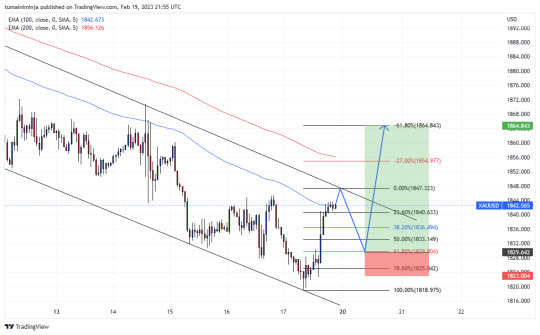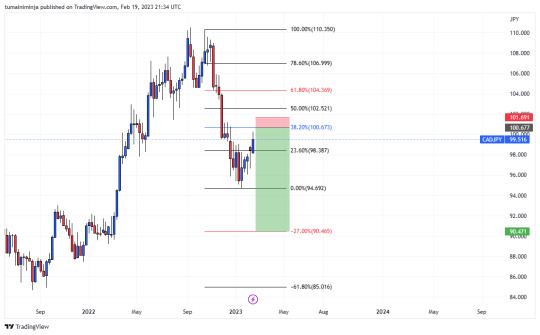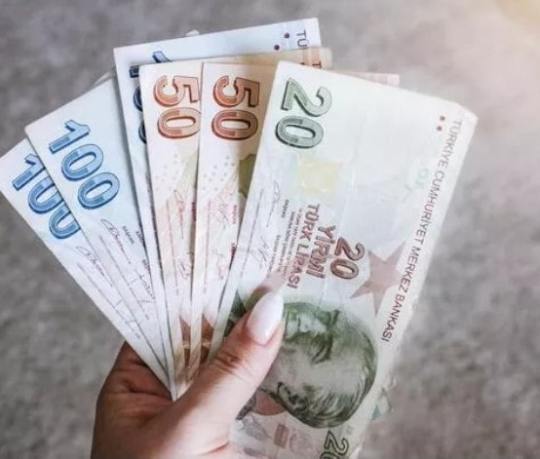#USdollar
Text
Experts are warning that the U.S. government is secretly planning to freeze all American bank withdrawals in the coming months due to the imminent collapse of the U.S. dollar.
15 notes
·
View notes
Text
My usd Commisions are open!! I’m saving up for a tattoo! I need around 250$ so anything helps!
They start at 20$ :3
Here are some examples!





#good omens#crowley#aziraphale#angel#fallen angel#innefable husbands#lgbtq pride#lgbtqa#lgbtqplus#artists on tumblr#usdollar#cashapp#paypal#art commisions#digital commisions#art commissions open#tattoos
17 notes
·
View notes
Text
Hihi! I'm Morgan and I really need some money to help pay for college and to move out so I'm selling some characters!
Waffle bag is $2
Color Pallete one is $1
🍓 girl is $3
Rosaina Moth is $3
Daisy Moth is $3
Peach Moth is $3
I can take Cashapp (prefered) but if you have a different method dm me and I'll confirm I take it or not!!







#artwork#money slave#i need money#art adopts#adopts#usdollar#cashapp#art for money#commisions open#digital aritst#digital illustration#digital commissions open#art#artists on tumblr#waffles#strawberies#strawberry#strawberry girl#peach#princess peach#rosalina#daisy
14 notes
·
View notes
Text
My View this week on #USD and #JPY pair,

Before taking any trade there confirmation and other confluence behind, so before taking this trade look for confirmation, if u don’t see anything please don’t trade u gonna lose money
if u wanna now more DM is open,
Forex is all about logic, not always going to work but, we look for higher possibility to work
Let’s win together

#forextips#forexsignals#forexmoney#forex#foryou#forexeducation#forexstrategy#education#usdollar#usd / jpy#gold#xauusd
13 notes
·
View notes
Text

Gelin beraber kazanalim kazanmak için mesaj atmanız yeterli ...
2 notes
·
View notes
Text
Reselling a character for $60! Need to sell by Friday!
ToyHouse:
https://toyhou.se/14960759.oni-naga

3 notes
·
View notes
Text
Geopolitische Spannungen und Finanzmärkte: Warum Anleger von Bitcoin in Gold und US-Dollar wechseln

Bitcoin ETF. Analyse der Anlegerströme in Zeiten geopolitischer Unsicherheit
Inmitten verschärfter geopolitischer Spannungen haben sich die Zuflüsse in Bitcoin-Fonds spürbar verringert. Die 4-Wochen-Durchschnittszuflüsse sind um 1 Milliarde US-Dollar von ihrem Höchststand auf etwa 700 Millionen US-Dollar gesunken.
Dennoch liegen die aktuellen Zuflüsse immer noch deutlich über den Niveaus der letzten 2 Jahre.
Eine interessante Beobachtung ist, dass trotz der dezentralen Natur von Bitcoin in Zeiten geopolitischer Unsicherheit Anleger Bitcoin verkaufen. Diese Nachfrage scheint sich größtenteils in Richtung Gold und US-Dollar zu verlagern.
Bitcoin: Bedeutung und Sicherheitsaspekte
Bitcoin ist eine Kryptowährung, die als Alternative zu traditionellen Währungen und als Absicherung gegen wirtschaftliche Unsicherheiten betrachtet wird. Als dezentralisierte Währung unterliegt Bitcoin nicht der Kontrolle von Regierungen oder Zentralbanken, was ihm eine gewisse Unabhängigkeit verleiht.
Die Sicherheit von Bitcoin steht jedoch zur Debatte, insbesondere in Bezug auf seine Volatilität und die Reaktion der Anleger auf geopolitische Ereignisse. Obwohl einige Bitcoin als sicheren Hafen betrachten, ziehen es andere vor, in Zeiten der Unsicherheit auf traditionelle Anlagen wie Gold und den US-Dollar umzusteigen.
Warum verlagern Anleger ihre Investments in Krisenzeiten?
Die Entscheidung von Anlegern, Bitcoin in einer geopolitischen Krise zu verkaufen, kann aus verschiedenen Gründen erfolgen. Eine mögliche Erklärung ist die Volatilität von Bitcoin, die viele Investoren dazu veranlasst, auf stabilere Anlagen umzusteigen, um Risiken zu minimieren.
Darüber hinaus könnten einige Anleger Bitcoin nicht als bewährten sicheren Hafen betrachten, da es im Vergleich zu traditionellen Anlagen wie Gold und dem US-Dollar noch relativ neu und unerprobt ist.
Die Rotation der Nachfrage von Bitcoin in Richtung Gold und US-Dollar könnte auch auf das Verlangen nach physischen Vermögenswerten zurückzuführen sein, die in Krisenzeiten als zuverlässiger angesehen werden.
Bitcoin ETF vs. Bitcoin Fonds: Was ist der Unterschied?
Ein weiterer wichtiger Aspekt sind die Anlegerpräferenzen zwischen Bitcoin ETFs (Exchange-Traded Funds) und Bitcoin Fonds. Ein ETF ist ein Investmentfonds, der wie eine Aktie an einer Börse gehandelt wird und den Preis von Bitcoin nachbildet. Im Gegensatz dazu investieren Bitcoin Fonds direkt in die Kryptowährung selbst.
Anleger könnten in unsicheren Zeiten dazu neigen, ETFs vor Fonds zu bevorzugen, da sie möglicherweise eine breitere Marktabdeckung und Liquidität bieten. Zudem könnten ETFs als weniger volatil und riskant angesehen werden als der direkte Besitz von Bitcoin.
Fazit
Die aktuellen Entwicklungen in Bezug auf Bitcoin und geopolitische Unsicherheiten werfen wichtige Fragen über die wahrgenommene Sicherheit und den sicheren Hafenstatus von Bitcoin auf. Während Bitcoin als innovative und dezentralisierte Währung gefeiert wird, entscheiden sich viele Anleger in Zeiten der Krise für traditionellere Anlagen wie Gold und den US-Dollar.
Es bleibt abzuwarten, wie sich diese Dynamik weiterentwickelt und ob Bitcoin langfristig als Absicherung gegen geopolitische Risiken an Bedeutung gewinnt. In jedem Fall ist es wichtig, die Rolle von Bitcoin im Kontext der globalen Finanzmärkte und als Teil eines breiteren Portfolios kritisch zu analysieren.
#Bitcoin#GeopolitischeSpannungen#Kryptowährung#Sicherheit#Anlegerverhalten#Gold#USDollar#Volatilität#BitcoinETF#BitcoinFonds
0 notes
Text
Emerging Markets Battle Weak Currencies As Dollar Crushes Peers

Emerging economies, particularly in Asia, are struggling with a strengthening US dollar. This has forced central banks to take various measures to protect their currencies.
Central Banks Step Up Intervention
The recent surge in the dollar’s value is putting pressure on emerging market currencies. Several central banks have signaled their readiness to intervene. Malaysia’s central bank stands ready to support the ringgit, while South Korea, Thailand, and Poland are closely monitoring currency volatility. Indonesia has actively intervened by selling dollars, and China has used its yuan fixing mechanism to maintain stability.
This intervention stems from concerns about the Federal Reserve’s monetary policy. Stronger-than-expected US inflation data has dampened hopes of interest rate cuts, which would weaken the dollar. This, in turn, would alleviate pressure on emerging market currencies. Additionally, rising tensions in the Middle East could further increase demand for the dollar as a safe haven asset.
Verbal Intervention and Direct Action
Some central banks are resorting to verbal warnings to influence currency markets. Thailand, for example, is emphasizing its commitment to managing volatility. Similarly, Poland has warned of potential intervention to bolster the zloty. South Korea is also keeping a close eye on the won’s movements.
Other central banks are taking more direct action. Indonesia has intervened by buying rupiah to limit losses. Peru has surprised markets by cutting interest rates while also reportedly selling dollars to support the sol. Notably, Israel also sold dollars to protect the shekel after a recent conflict.
China’s Balancing Act
China faces a unique challenge. Weakening the yuan could encourage capital flight, while propping it up could worsen the economic slowdown. The People’s Bank of China has prioritized stability by keeping the yuan fixing within a tight range. However, continued dollar strength may force them to deploy additional tools.
Investment Opportunities?
While the dollar’s dominance shows no signs of immediate abating, some analysts see this as a potential buying opportunity for beaten-down emerging market currencies. The delay in expected Fed rate cuts creates headwinds for these currencies, but it could also present a chance to “buy the dip” in regional assets. This article highlights the ongoing battle between emerging market central banks and the strengthening US dollar. It explores the various intervention strategies used and the challenges faced by policymakers in these economies.
Also Read: Shimao Group Faces Liquidation Petition Amidst China’s Property Sector Turmoil
0 notes
Photo

Unglaublicher Lottogewinn in den USA | CeBoz.com
Ein glücklicher Gewinner aus den USA erlebt einen unvergesslichen Moment, als er den Jackpot knackt.
0 notes
Text
Positive Economic Boost as US Inflation Shows Signs of Deceleration!
Logic Finance- In November, prices in the United States experienced a notable decline, marking the first decrease in over three and a half years. This downturn contributed to a reduction in the annual inflation rate, pushing it further below the 3% threshold. Consequently, financial markets are increasingly anticipating a potential interest rate cut by the Federal Reserve in the coming March.
The recent report released by the Commerce Department on Friday revealed a persistent easing of underlying inflation pressures. This moderation in inflation not only alleviates economic concerns but also leaves households with more disposable income. This surplus income is expected to bolster consumer spending, providing crucial support to the overall economy as we approach the end of the year.
Yet another dataset underscores the robustness of the ongoing economic expansion, a resilience attributed to a steadfast labor market. Contrary to dire predictions of a recession by economists and certain business leaders since late 2022, the economy has demonstrated impressive endurance.
According to Sal Guatieri, a senior economist at BMO Capital Markets in Toronto, "Fed Chairman Jerome Powell couldn't have asked for a better present this year." The current economic scenario surpasses expectations, defying initial projections. While the Federal Reserve, under Powell's leadership, is not hastily considering rate cuts, it seems increasingly inevitable, becoming more a matter of when than if, as the economic landscape continues to evolve positively.
The latest report from the Commerce Department's Bureau of Economic Analysis reveals a 0.1% decrease in inflation, as measured by the personal consumption expenditures (PCE) price index, for the previous month. This marks the first monthly decline in the PCE price index since April 2020, following an unchanged reading in October.
Notable decreases were observed in both food prices, which edged down by 0.1%, and energy prices, which experienced a significant 2.7% drop. Over the 12 months leading up to November, the PCE price index showed a 2.6% increase, slightly lower than the 2.9% rise observed in October. Remarkably, October marked the first time since March 2021 that the annual PCE price index was below the 3% threshold. This data highlights noteworthy shifts in inflation trends, impacting various sectors of the economy.
Economists surveyed by Reuters had predicted no change in the PCE price index for the month, with a year-on-year increase of 2.8%.
Excluding the volatile food and energy elements, the PCE price index experienced a 0.1% uptick in November, mirroring the gain seen in October.
The core PCE price index, which excludes food and energy, showed a year-on-year increase of 3.2% in November, marking the smallest rise since April 2021, following a 3.4% increase in October. The Federal Reserve closely monitors PCE price measures to gauge progress toward its 2% inflation target.
In a government report on Thursday, core PCE inflation for the third quarter was reported to have increased at a 2.0% annualized rate. Combined with the mild gain in November, this resulted in a six-month core PCE inflation rate of 1.9%.
Also Read | Global Banks Predict Smooth Sailing, But U.S. Companies Sound the Alarm! The Shocking Twist You Didn’t See Coming!
Economists suggest that monthly inflation readings of 0.2% on a sustainable basis are necessary to bring inflation back to the Fed's target. According to CME Group's FedWatch Tool, financial markets indicate a roughly 75% chance of a rate cut at the Fed's March 19-20 policy meeting.
The trend of subsiding inflation is positively impacting consumer sentiment, as indicated by a separate report from the University of Michigan, which showed a significant increase in December, reversing declines from the previous four months.
President Joe Biden, facing challenges related to the high cost of living, welcomed the news, attributing it to collective efforts in addressing supply chain issues and boosting workforce participation.
In response to the developments, stocks on Wall Street were trading higher, and the dollar weakened against a basket of currencies, while U.S. Treasury prices rose.
Read the full article
0 notes
Text
Naira Surges Against the US Dollar, Reaches N1113/$ in Peer-to-Peer Market

In a surprising turn of events, the naira strengthened by N166 against the US dollar in the P2P market within just a few hours, leaving currency traders to rethink their strategies. What had initially peaked at N1279/$ on Thursday evening has now settled at a more favorable rate of N1113/$ at the time of this report.
Market observations suggest that this surge might be attributed to a lack of buyers, as few are willing to pay the higher rate of around N1300/$. This hesitation may reflect the growing optimism about the naira's future stability.
Finance Minister Wale Edun has also revealed that the country is poised to receive a substantial $10 billion in foreign currency inflows over the next few weeks. This influx is expected to bolster liquidity in the foreign exchange market, which has been a hindrance to the growth of Africa's largest economy. President Tinubu has signed two executive orders to facilitate the issuance of domestic financial instruments in foreign currencies and encourage the transfer of cash from outside the banking system into banks.
ALSO READ: Interesting stories
Traders, especially speculators, are now contemplating the likelihood of further Naira appreciation against the dollar in the coming days. Consequently, they find themselves compelled to sell at lower rates.
President Tinubu, in his recent summit address, has assured attendees that he is committed to clearing the backlog and resolving liquidity issues in the foreign exchange market. He emphasized stringent monitoring of all transactions within the foreign exchange market, signaling a crackdown on arbitrage practices.
The government acknowledges that liquidity challenges have hindered the efficiency of Nigeria's foreign exchange market. However, it is determined to take all necessary steps to rectify this situation. Plans are underway to streamline and restructure the foreign exchange market, ensuring that all legitimate transactions occur in the official market. Any unregulated activities will be penalized and deemed illegal.
LEARN MORE: Read blogs and articles here!!!
Meanwhile, on the global front, the US dollar has reached a near one-week high against a basket of currencies. This rise is attributed to a decrease in investor appetite for riskier currencies following disappointing corporate results, which have raised concerns about the state of the economy. Additionally, rising US Treasury bond yields have contributed to the shift in risk sentiment.
Federal Reserve Chairman Powell's recent speech also had an impact on the markets. While he concurred with other officials that policy may need to be tightened further, his remarks did not definitively suggest a rate hike in December, leaving room for uncertainty.
The Fed's intention is to convince the market that more rate increases are possible, contingent on a significant decline in inflation.
ALSO CHECK: Affordable products
Read the full article
#Currency#CurrencyExchange#CurrencyStrength#EconomicNews#ExchangeRate#ExchangeRateMovement#FinancialMarkets#ForeignExchange#Forex#ForexMarket#ForexTrading#ForexUpdate#Naira#NairaAppreciation#NairaValue#NigerianCurrency#Peer-to-PeerMarket#Reaches#Surges#USDollar
0 notes
Text
Fed verschiebt Zinssenkungen, US-Dollar stärker denn je

Der US-Dollar auf dem Vormarsch: Beste 5-Tage-Periode seit Februar 2023
In den letzten fünf Handelstagen hat der US-Dollar eine bemerkenswerte Stärke gezeigt, die ihn auf Kurs für die beste 5-Tage-Periode seit Februar 2023 bringt. Der Bloomberg Dollar Spot Index verzeichnete in diesem Zeitraum einen Anstieg von etwa 2 %, was den stärksten Anstieg in den letzten 14 Monaten darstellt. Gleichzeitig hat der US-Dollar-Index seit Jahresbeginn einen soliden Anstieg von rund 5 % verzeichnet.
Verschiebung der Zinssenkungen und Marktreaktion
Diese beeindruckende Performance des US-Dollars steht in direktem Zusammenhang mit einer bedeutenden Verschiebung der Zinssenkungserwartungen. Die Märkte erwarten nun, dass die Zinssenkungen erst im September 2024 beginnen und im Laufe dieses Jahres nur zwei Zinssenkungen vorgenommen werden. Dies markiert eine deutliche Abkehr von den Erwartungen vor weniger als einem Monat, als viele Investoren eine Zinssenkung bereits im Juni erwarteten.
Das neue Basisszenario lautet nun "länger höhere Zinsen". Diese veränderte Erwartungshaltung spiegelt das wachsende Vertrauen in die Stabilität der US-Wirtschaft wider. Die Federal Reserve signalisiert, dass sie bereit ist, eine moderatere geldpolitische Strategie zu verfolgen, um die Inflation zu kontrollieren und gleichzeitig das Wirtschaftswachstum zu unterstützen.
Positive Marktreaktion und US-Dollar-Stärke
Die Entscheidung der Fed, die Zinssenkungen weiter zu verschieben, hat positive Reaktionen an den Märkten ausgelöst. Investoren schätzen die Klarheit und Vorhersehbarkeit der geldpolitischen Strategie der Zentralbank, was zu einem verstärkten Interesse an US-Dollar-Anlagen führt. Die robuste wirtschaftliche Erholung in den USA verstärkt dieses Vertrauen zusätzlich und trägt zur Stärke des US-Dollars bei.
Ausblick und mögliche Auswirkungen
Es bleibt abzuwarten, wie sich die geldpolitische Strategie der Federal Reserve in den kommenden Monaten entwickeln wird. Die Stärke des US-Dollars könnte weiter zunehmen, wenn die Märkte weiterhin Vertrauen in die Wirtschaft und die geldpolitischen Maßnahmen der Fed haben. Dies könnte Auswirkungen auf andere Anlageklassen und internationale Handelsbeziehungen haben, da Investoren ihre Portfolios entsprechend anpassen.
Insgesamt unterstreicht die jüngste Entwicklung des US-Dollars die Bedeutung von geldpolitischen Entscheidungen und wirtschaftlichen Daten für die Devisenmärkte. Die Stabilität und Stärke des US-Dollars wirken sich nicht nur auf den Devisenmarkt aus, sondern könnten auch weitreichende Auswirkungen auf globale Finanzmärkte und Handelsströme haben. Es wird daher entscheidend sein, die Entwicklungen in diesem Bereich aufmerksam zu verfolgen und deren potenzielle Auswirkungen zu verstehen, um fundierte Investitionsentscheidungen treffen zu können.
0 notes
Text
USA und Katar einigen sich darauf, das an Teheran gezahlte Lösegeld in Höhe von 6 Milliarden US-Dollar erneut einzufrieren
Mehrere Pressestellen in den Vereinigten Staaten berichteten, dass die Biden-Regierung eine „stille Vereinbarung“ mit Katar getroffen habe, die den Iran daran hindern würde, auf die 6 Milliarden US-Dollar zuzugreifen, die Amerika letzten Monat freigegeben hatte, um die Freilassung mehrerer iranischer Geiseln sicherzustellen.
Berichten zufolge sagte ein stellvertretender Finanzminister, Wally…

View On WordPress
#darauf#das#einigen#einzufrieren#erneut#gezahlte#hohe#Katar#Lösegeld#Milliarden#sich#Teheran#und#USA#USDollar#von
0 notes
